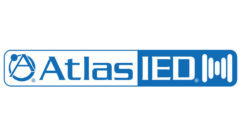
Audio in the End Zone at Texas Christian University, Part 2
Jan 24, 2012 11:39 AM,
With Bennett Liles
Listen to the Podcasts
Editor’s note: For your convenience, this transcription of the podcast includes timestamps. If you are listening to the podcast and reading its accompanying transcription, you can use the timestamps to jump to any part of the audio podcast by simply dragging the slider on the podcast to the time indicated in the transcription.
When Texas Christian University completely remodeled its Amon G. Carter Stadium it included a total sound system upgrade and they called on Acoustic Dimensions to design a system that could provide clear speech, booming music, and stand up to extremes in the weather. Casey Sherred and Brian Elwell are here to tell us how they did all that, coming up next on the SVC Podcast.
SVC: All right, Casey Sherred and Brian Elwell from Acoustic Dimensions. Thanks for being back with us on the SVC Podcast talking about the Amon G. Carter Stadium sound system at Texas Christian University. It’s always going to be a huge job with a stadium sound system. You guys dealt with a couple of changes that came along in the works about the general design of the system. How did Acoustic Dimensions get into this project? Did you have a long-standing relationship with TCU?
Brian: TCU did a renovation or actually it was a build-out of the sports complex of the south end zone. The whole south end-zone building is new. There are suites in there, there are team facilities, there’s a club, there are some private suites, and we were involved with that project along with HKS, the architect, and they were the architect for the renovation of the stadium. They asked us as well as others to provide a proposal for the work and we were fortunate enough to be selected. [Timestamp: 1:52]
And what time of year was all this work going on outside?
Brian: The stadium, basically, the bulk of their construction, they started demo plans for the day after the season ended. The stadium was blown up, I think, within one or two weeks after the season and Austin Commercial, the general contractor, went like gangbusters and built the entire west-side structure as well as the north scoreboard, the north end, and they developed it to the point to where they could have a temporary certificate of occupancy and have some fans come in and fill up the new parts of the stadium. Basically it was, it’s a two-year construction project where they had to hold football games in there in the interim year. So the project went along, obviously, it was about ten months—nine and a half months worth of construction from the time they demo’d the building to the time that they could let fans in to watch football game. [Timestamp: 2:57]
OK, so we’re talking about the installation work going on in probably all kinds of weather.
Brian: Oh, in one of the most miserable Texas summers you can imagine. It was the hottest summer on record. [Timestamp: 3:09]
So when you’ve got sports fans coming out there, and this project stretches beyond just one football season, that sounds like a lot of hard and fast deadlines for a whole lot of people doing a bunch of different kinds of work.
Brian: No one who was not part of this project is going to fully understand and grasp what the contractors had to do to be able to successfully pull this project off. It was incredible. Everyone on there was hard working, they got along, they solved problems quickly. It was an effort on everyone’s part to make this happen. [Timestamp: 3:43]
So what was really the toughest task for you on this?
Brian: Well, I think, us as the design team, we had the advantage of there wasn’t as critical of a deadline. I think we may have had more time to design it than the contractors did to build it. The most difficult task for us during design was really what we talked about two weeks ago was the change in direction in terms of an end-zone cluster versus distributed and then back to an end-zone cluster again. But certainly once construction started it was fast and furious. There was little time allowed to answers our RFI’s. Everything needed to be done quickly and it all worked out and went smooth. I don’t know if I’m going to say smoothly, but it went. It happened. [Timestamp: 4:37]
And you have a distributed system with a lot of different kinds of speakers for different places in the stadium. We’re not just talking about the sound system out in the stands but club levels, restaurant sort of areas so there has to be a lot of different local control setups so how did you arrange all of that?
Casey: Yeah for the most part there’s the suites have local control, which they have the ability to change the source that they’re listening to within their suite with a controller on the wall that ties directly into the PSS system. They also have the ability to change the level control in those suites. And then we have the Founder’s Lounge and two clubs there that they can have small events in there for when you use a wireless mic and they have local control over all the sources. There’s local playback for video and audio sources in those spaces and as well as a level control for what’s going on in there so they can use those during off-season and for recruiting events. [Timestamp: 5:38]
Audio in the End Zone at Texas Christian University, Part 2
Jan 24, 2012 11:39 AM,
With Bennett Liles
OK so when you got all of this in and you’ve got sound out of all of the different amps and the speaker installations. How did the testing go? Were you guys there for all of that?
Casey: Yes, we were there after Elecro Acoustics did all of their test out and made sure that everything was connected and working properly. Then we went out and tuned the system and did all the driver alignment—all that fun stuff. Total testing was about a two-week process, just working around different schedules because construction’s still going on as we’re testing. So we had to work around all those schedules and just having to tweak some of the aiming of the arrays as you can imagine a one-degree of a change on an array is a huge difference when you’re 600ft. away. [Timestamp: 6:24]
Yeah, and I would think that a huge concrete stadium like that might sound a lot different when it’s empty than when it’s full of people.
Casey: It changes some, and we just have to account for that and we were there for the first game and we do that so we can hear what it sounds like with people in it. We walk around and listen to find adjustments at that point during the first usage. [Timestamp: 6:46]
What’s generally the most significant problem with stadium sound systems, not just this one but in putting in a stadium sound system, what’s usually the hardest thing to get right?
Brian: Well, I think a lot of it depends on what kind of a system that you’re going to be using. A distributed system has its associated problems and an end-zone cluster has its problems. In our case, some of the things that you commonly run into with an end-zone cluster is that you need to be aware that it’s going to be throwing a lot of energy at surfaces that could be reflective, so you really need to look at the reflections—where they’re going to be directed at. And one of the things that we did here was we do have the speakers pointing towards the south end zone where there are some buildings, and we needed to work on getting a very, very high cue, high-directive speaker to point and sound to the fans and not bounce a lot of energy off the buildings. So there were some things there that we did there to try to accommodate that. And then the other thing that you run into with an end-zone cluster is making sure that you’ve got the timing right for the video. We typically try to time align the audio and the video system by actually delaying the video so that the video and the audio are in alignment at the mid field of the 50 yard line. So what that means is that people close the videoboard will be able to perceive the sound a little bit before the video and people on the opposite end will be seeing the video a little bit before they hear the sound but trying to get that alignment is one of the big challenges in a large stadium with end-zone cluster. [Timestamp: 8:29]
I would think that you could get into a lot of delay problems, multiple echoes, and speech intelligibility things with stadium sound systems.
Brian: Well, the comeback it’s a question of where—reflections will certainly give you that problem. The direct energy is usually a little problematic at the far ends of the stadium, but beyond that, it’s the reflections that give you problems with intelligibility. [Timestamp: 8:54]
Well, it sounds like you did everything right and got the system tweaked and running OK so what’s coming up next for Acoustic Dimensions. What have you got in the works?
Brian: Well, as we said, we’ve got three offices or four offices and we’ve got numerous projects that are on the books. I can’t say without unfortunately mentioning the name of the project is that we do have another large collegiate football stadium that we’re working on in the south and I would say that people should start hearing about that in a year or so. [Timestamp: 9:25]
Ok, well we’ll look forward to it and we may be talking to you about that one, too.
Thank you.
All right, Casey Sherred and Brian Elwell from Acoustic Dimensions. Thanks for telling us about the Amon G. Carter Stadium sound system project.










